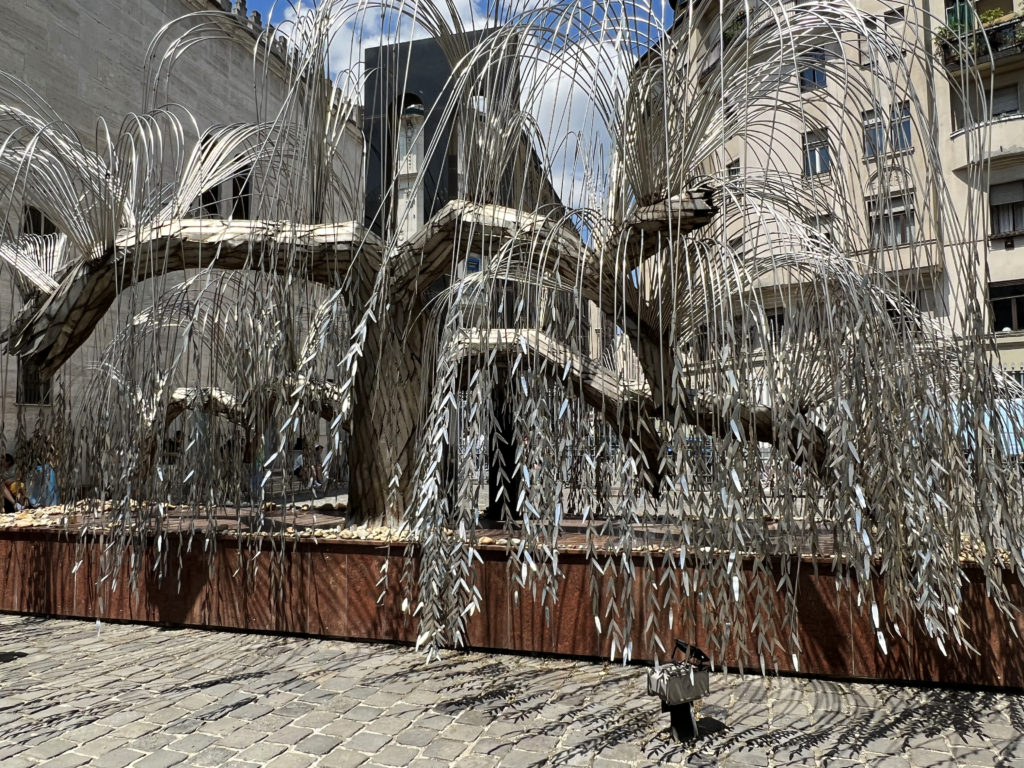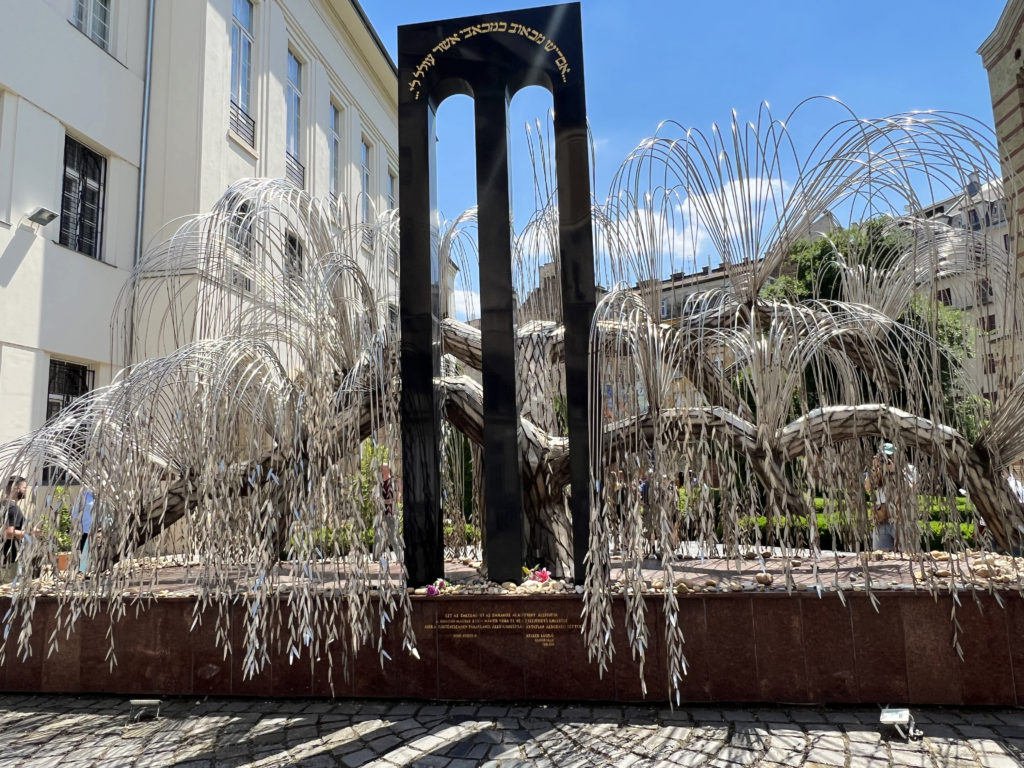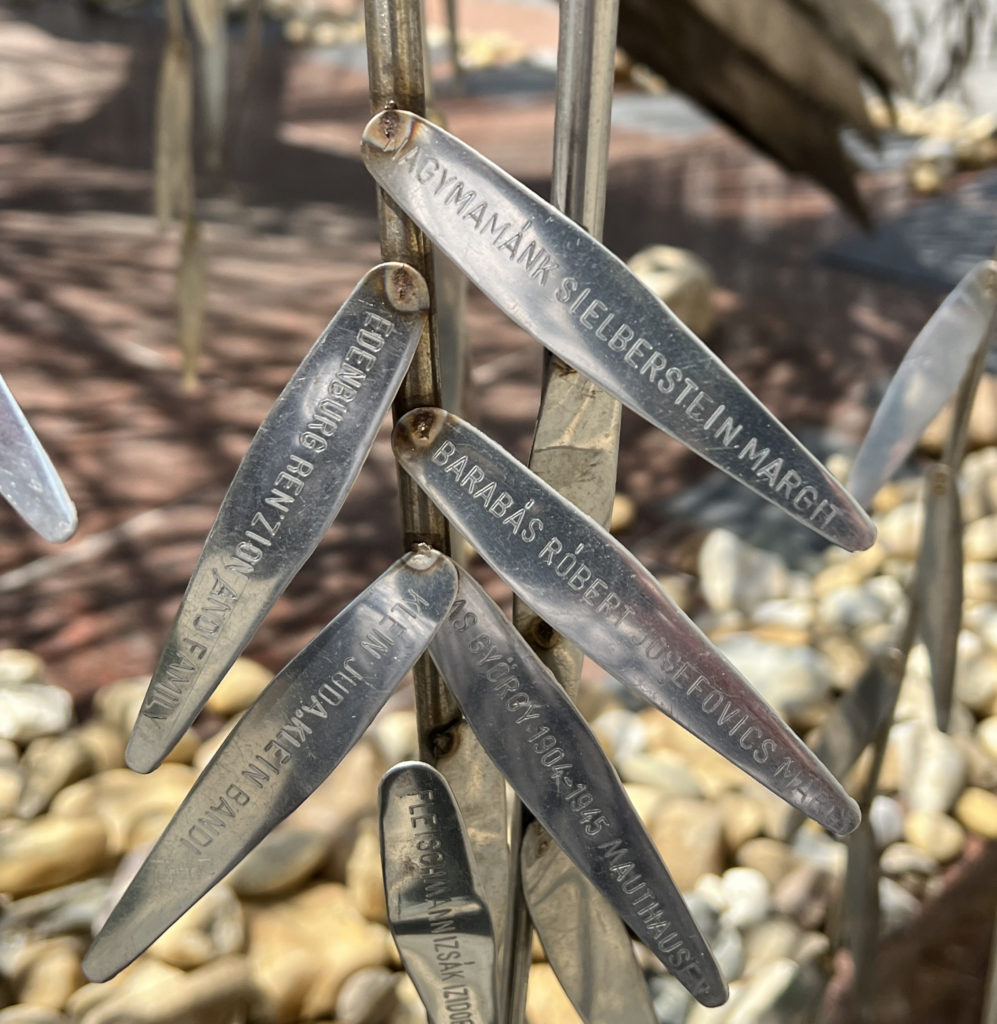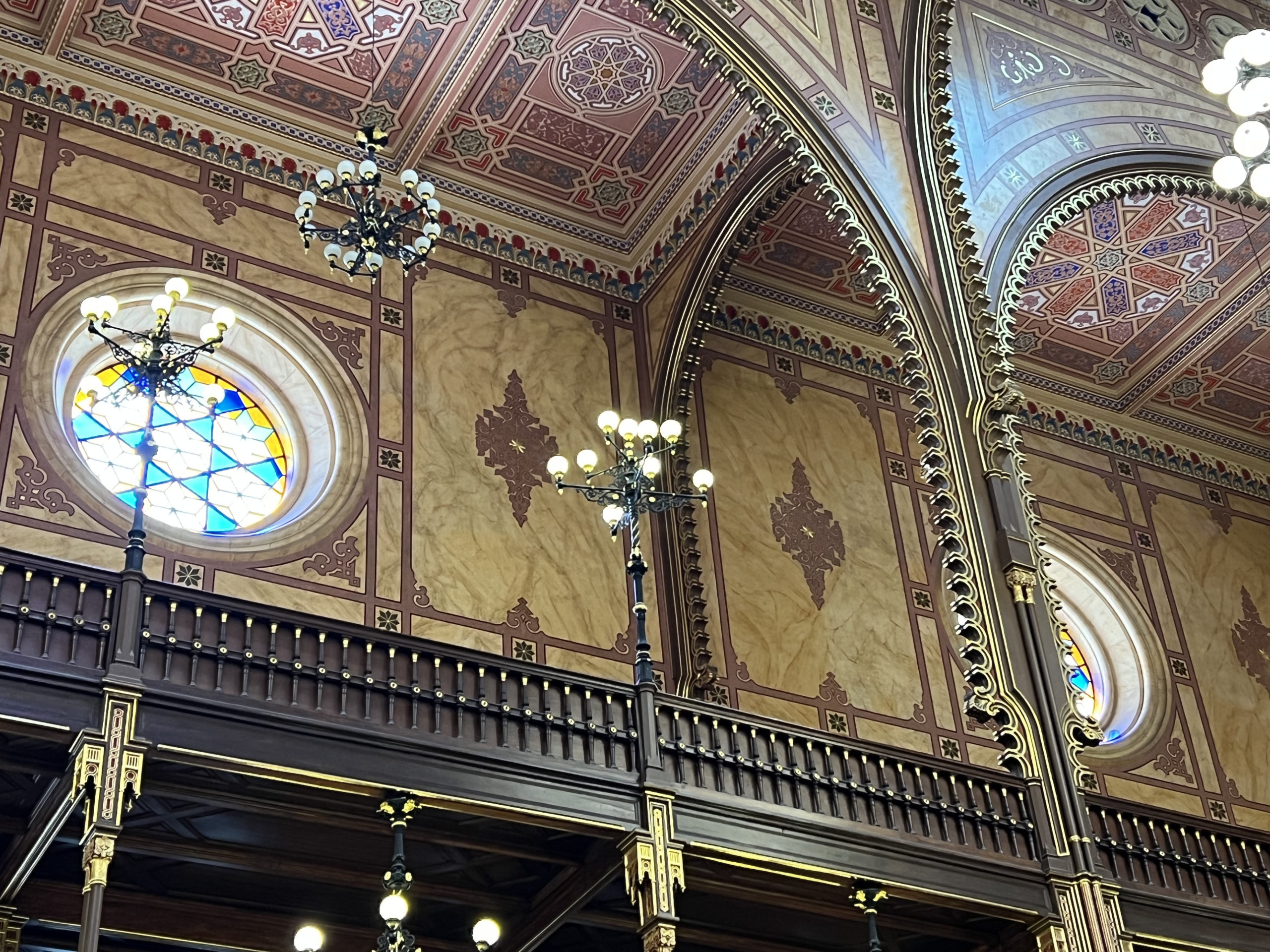
Dohány Street Synagogue, Budapest
The Dohány Street Synagogue, also known as the Great Synagogue, is the largest synagogue in Europe and the second largest in world. It is actually a complex consisting of the Great Synagogue, the Jewish Museum, Heroes’ Temple, a graveyard, and the Raoul Wallenberg Emlékpark, also known the Holocaust Memorial Park. We visited all of these, but I will start by describing the Great Synagogue.
After the destruction of the temple of Jerusalem, synagogues became a center of Jewish religious life. A synagogue is a place of common prayer, learning and community life. The Dohány Street Synagogue was designed by Ludwig Forster. It is not typical of Jewish synagogues, but is more similar to a Moorish style influenced by Moslem architecture. Construction was completed in 1859. During World War II, the Germans used it for a communications center. Bombings resulted in a great deal of damage, however it was not completely destroyed because the Germans protected it for their own purposes. A major restoration was undertaken in the 1990s.
There are two beautiful towers topped with domes that can be seen from quite a distance. The towers are octagonal. This was the first synagogue built with onion-shaped domes, but they were so beautiful that later synagogues also incorporated them in their design. There is a rose window over the entrance. Between the entrance and the rose window is a phase in Hebrew which reads, “And let them make Me a sanctuary that I may dwell among them.” It is from Exodus 25:8. On the roof are stone tablets with the Ten Commandments (just to the left of the tower on the left).
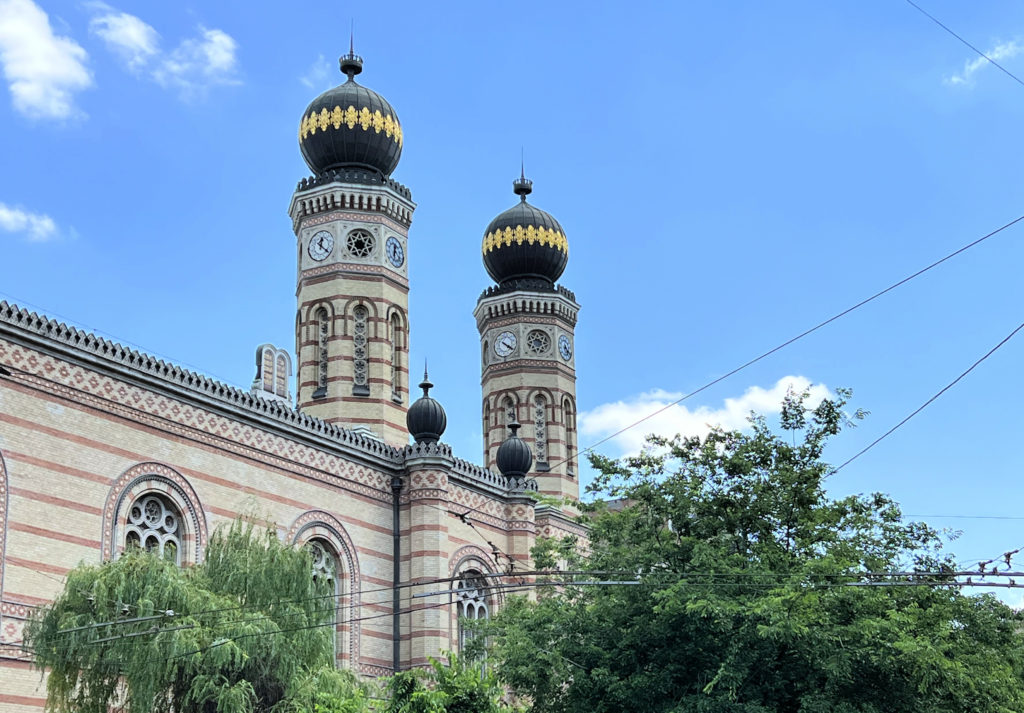
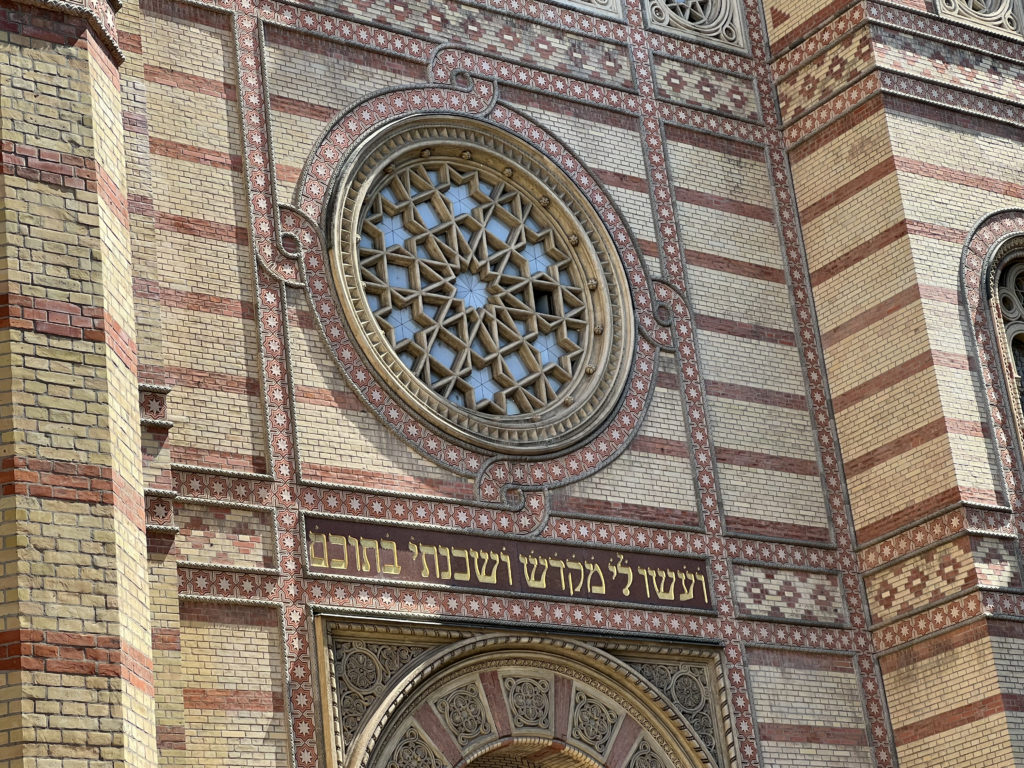


When we walked into the Synagogue, we were immediately struck by its beauty. There are ornate decorations of gold and large chandeliers. Such decoration is not typical of most synagogues. Some elements of the Synagogue are similar to a Catholic Church – the central nave, the pulpit, the organ and stained glass windows. But other elements are typical of a synagogue. There are separate areas for men and women to sit. During services, men would sit in the pews on the main floor and women would sit in the balconies. Seating will accommodate almost 5,000 people. There is standing room for another 2,000 people. The pews are original to the Synagogue.

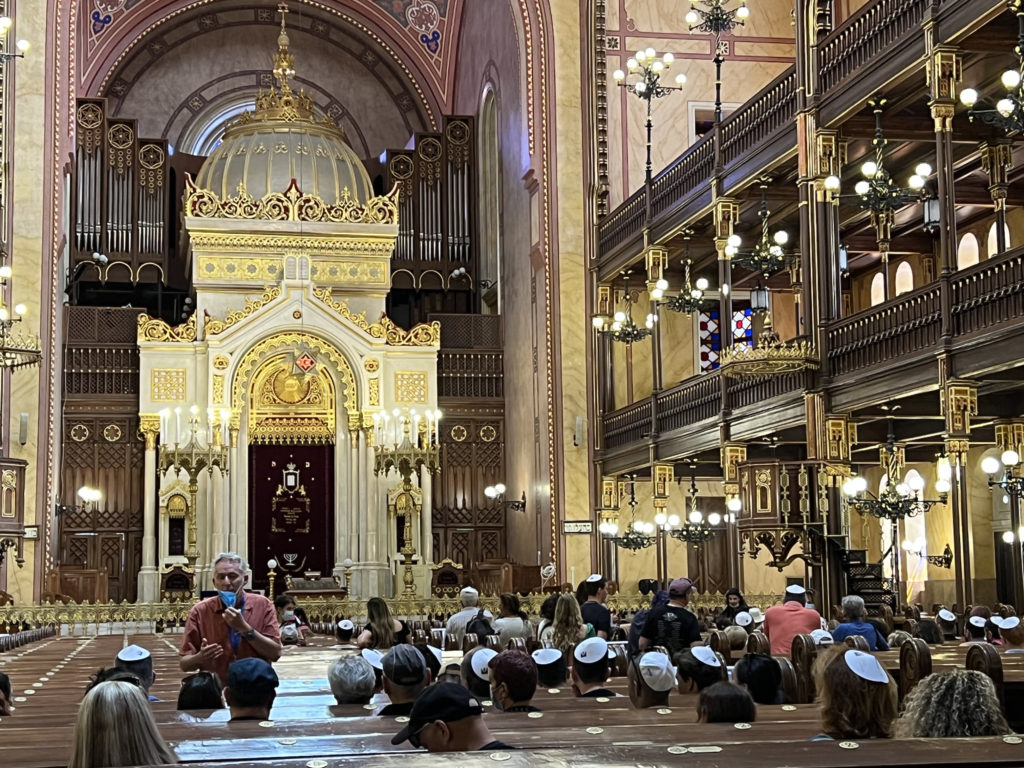

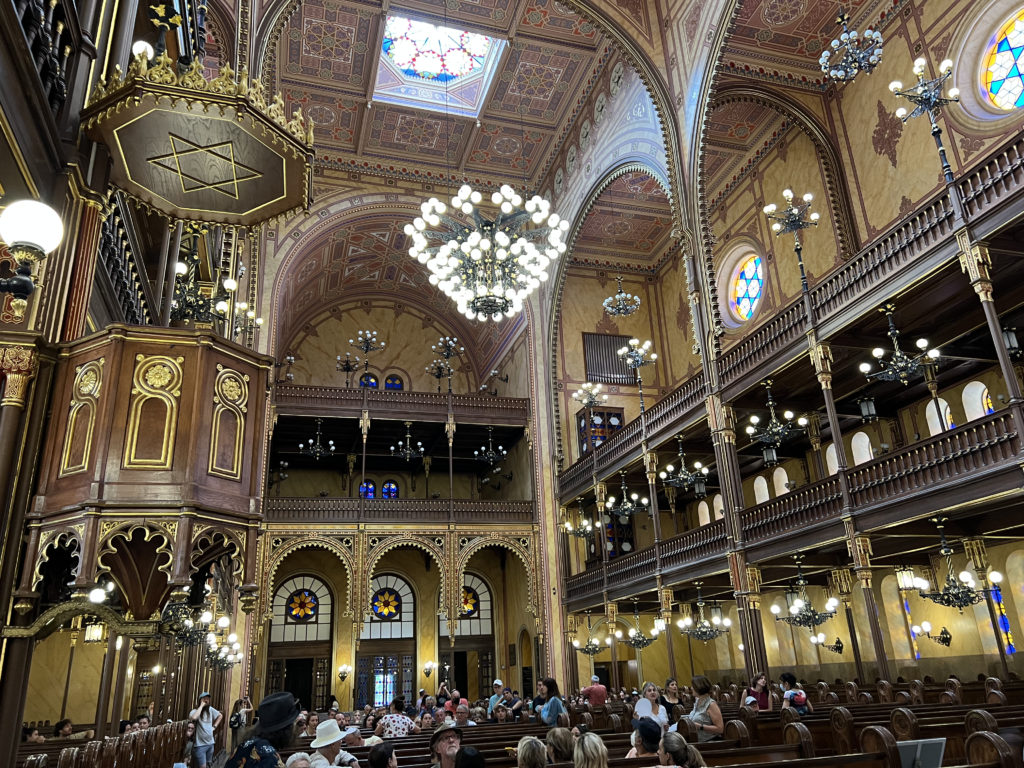
I am not Jewish but this is my best understanding of the ark and Torah. The Aron Hakodesh, or ark, is situated on the eastern wall near the front of the synagogue. In this way, worshippers face Jerusalem when looking toward the ark. The Ner Tamid, or eternal light, hangs above the ark. The ark holds the Torah, the first five books of the Hebrew Bible. The Torah is written by hand on parchment in accordance with strict rules. During World War II, Catholic monks hid the Synagogue’s Torahs from the Germans and returned them safely after the war. The ark also contains 25 Torah scrolls from other synagogues that were destroyed during the Holocaust. When the Torah is read, it is carried to the bimah, a raised platform holding a reading table. The Torah is placed on the reading table. The reader will use a pointer, or yad, while reading to lessen the touching of the Torah. After it has been read, the Torah will be returned to the ark. The reading table is similar to the altar in Christian churches.
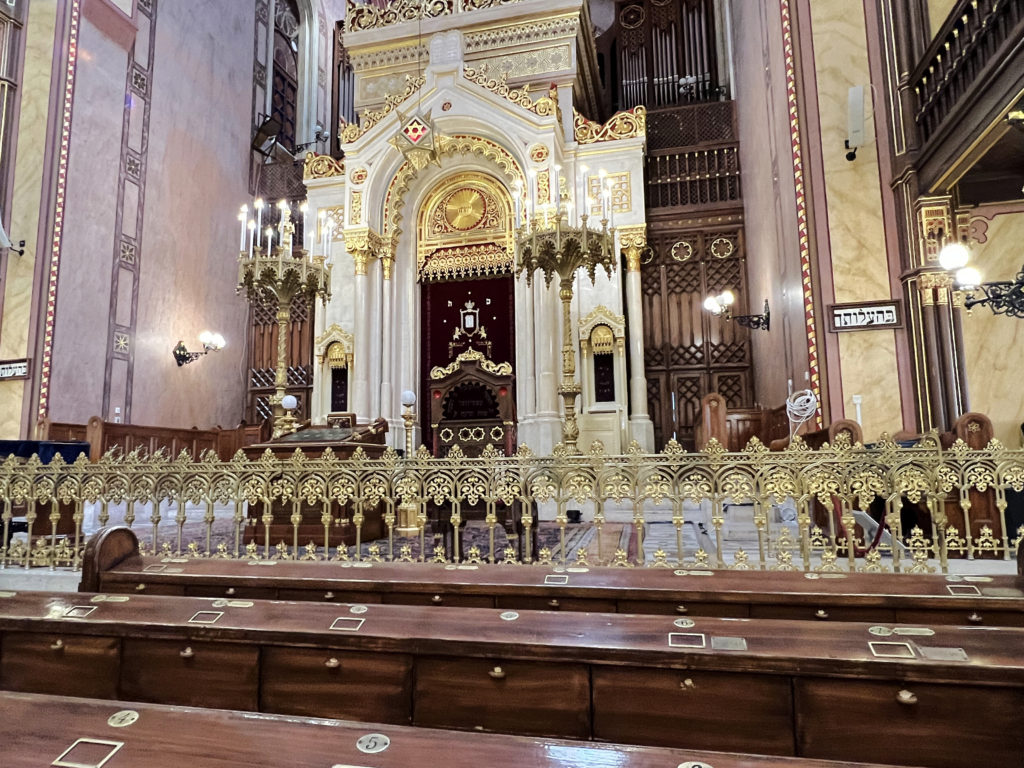


We next visited the Jewish Museum. The Museum was constructed between 1930-1931. There are many religious relics with information cards to help explain some of the basics of the Jewish religion. These are a few of the exhibits we saw. The first is a shofar. On the Jewish new year, Rosh Hashanah, the prayer service ends with the blowing of the shofar, an ancient Jewish instrument. Tradition says the first shofar was made from the horn of the ram that appeared to Abraham to replace his son Issac as a sacrifice.
The next are stained glass windows that were originally in the Jewish High School. In 1950, the school was nationalized, the synagogue abolished, and the windows removed. The former Director of the high school was also head of the Jewish Museum from 1950 to 1963. He saved these windows and moved them to the Museum. The top rows of pictures are Biblical places, the next are symbols of the tribes of Israel, the third are Jewish holidays, and the last are the stages of life.
The last relic pictured here is a prayer book from 1739. Each new month, marked by a new moon, has a special set of prayers. In this prayer book, the illustration shows the blessing of the new moon.

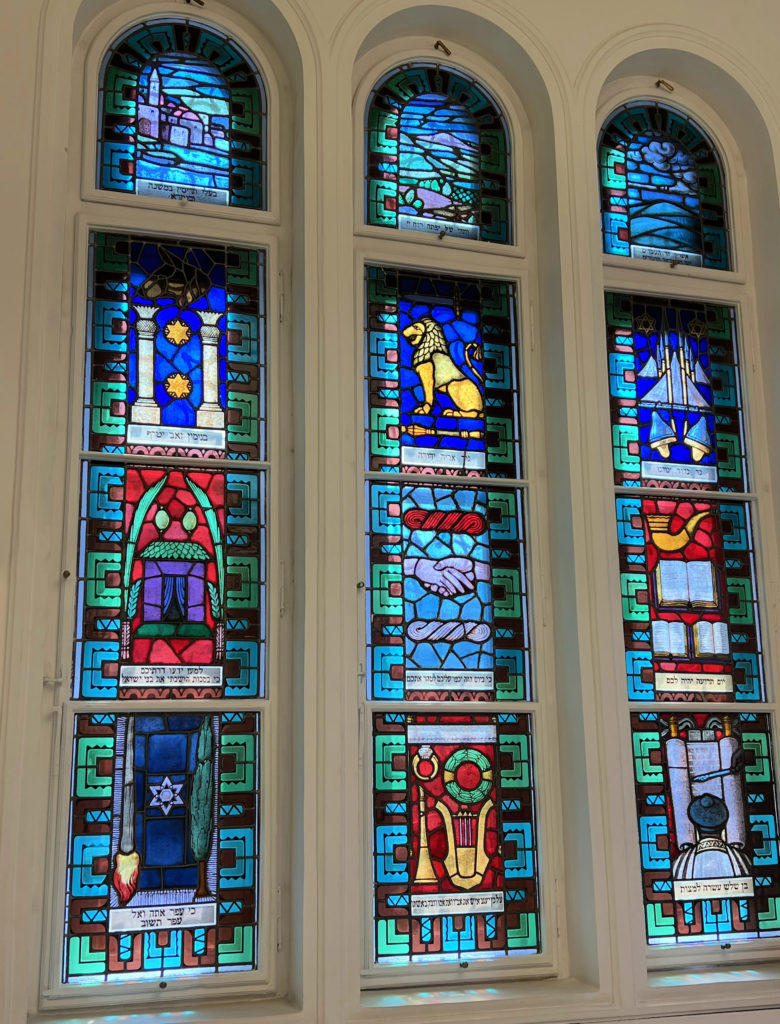
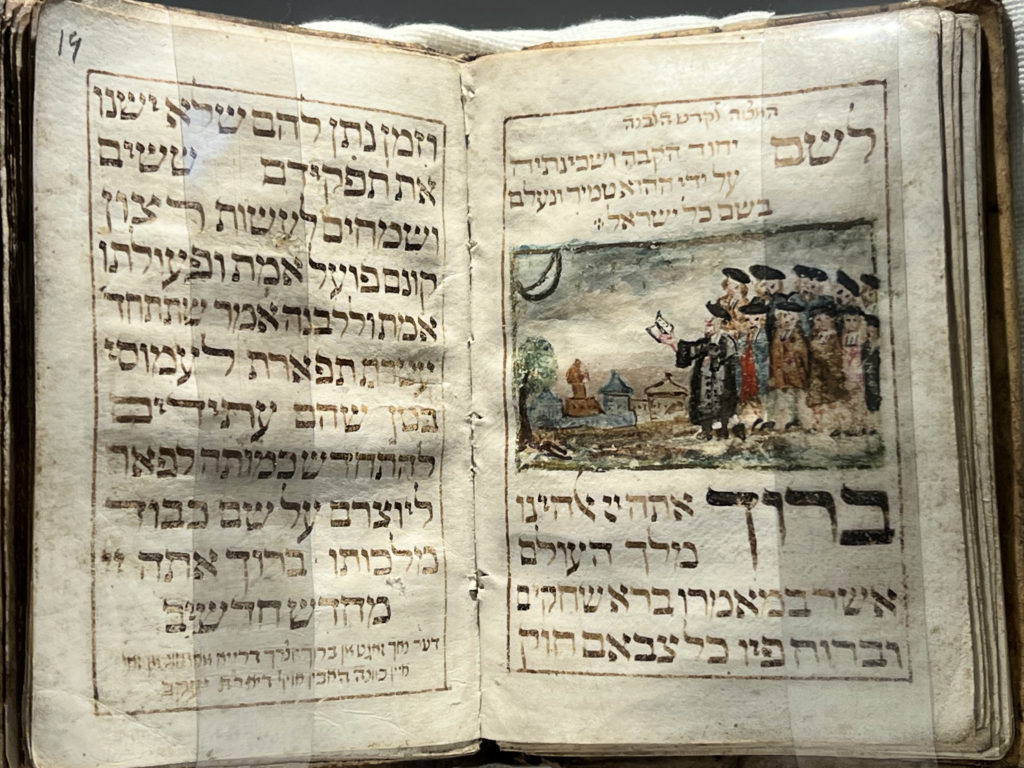
In 1944, the Dohány Street Synagogue was part of the Jewish Ghetto. During the winter of 1944-45, thousands of people in the ghetto died from hunger, cold and torture. Many bodies were left unburied in the streets. After Russian forces liberated Budapest and the ghetto, bodies were buried in two cemeteries and the gardens next to the Synagogue. While it is not customary to have a cemetery next to a synagogue, historical circumstances necessitated it. Over 2,000 bodies are buried here in 24 mass graves. It is the largest Holocaust mass grave in Hungary.


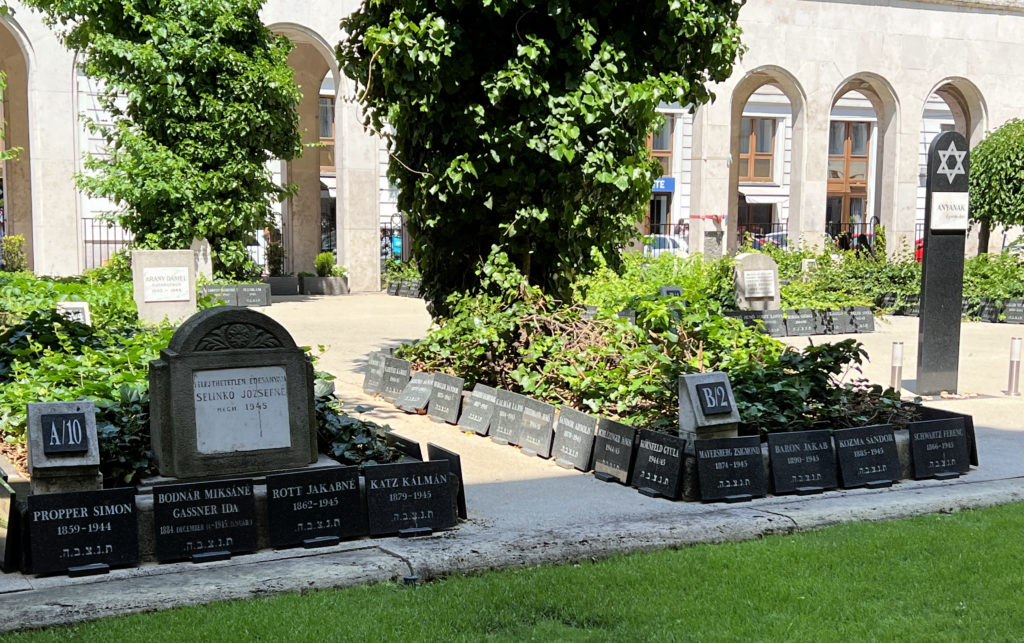
This is Heroes’ Temple and honors the Jewish soldiers who fought and died in the Hungarian army in World War I. It was added to the synagogue complex in 1931. After the war, many blamed the nation’s minorities for the consequences of the peace treaty signed in 1920, turning mainly against the Jews. The Jewish Community tried to prove their loyalty towards Hungary and established the Hungarian Jewish Military Archives to collect information on the Jewish soldiers who lost their lives in the war.
Heroes’ Temple is much smaller than the Synagogue, seating about 250 people. It is used for religious services on weekdays and in the winter because the Synagogue is not heated during the winter months. It also contains an ark where the Torah is kept and a bimah. It is oriented to the east just as the Great Synagogue.

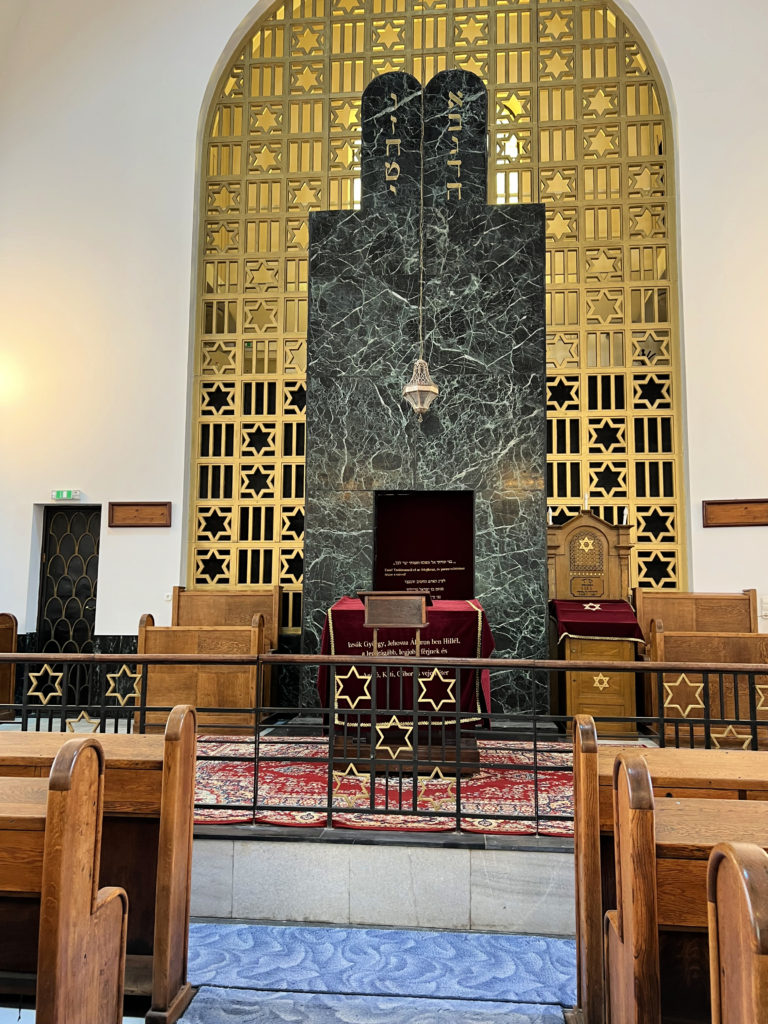
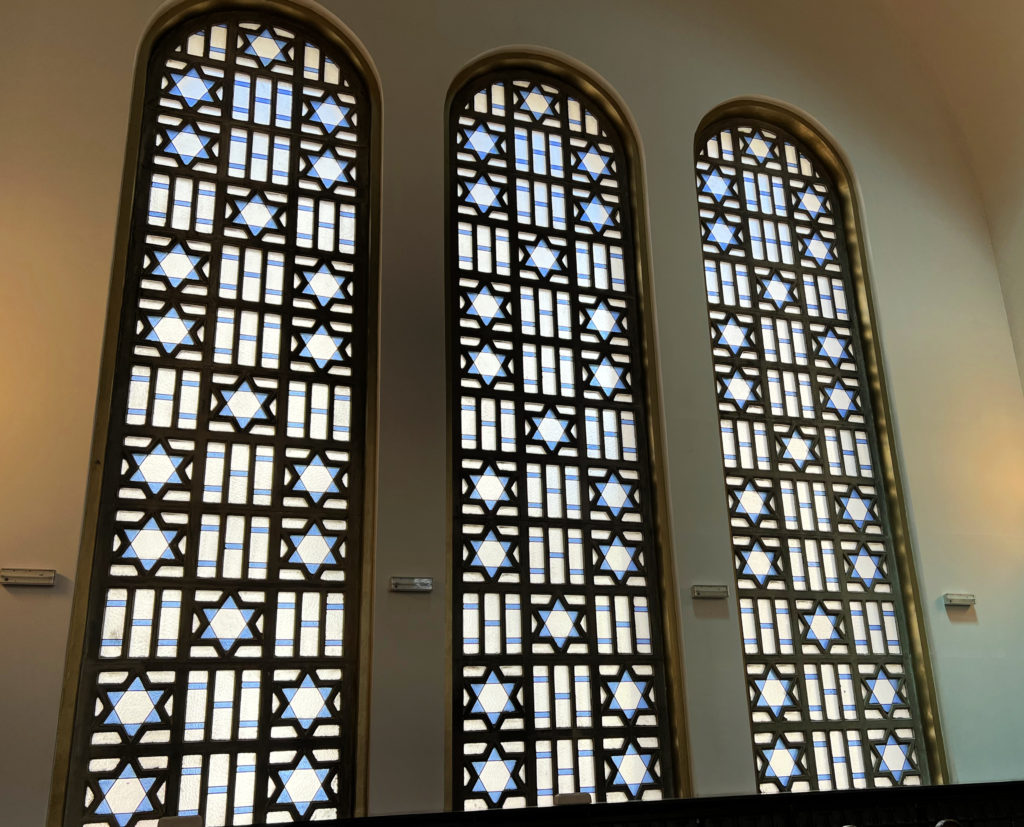
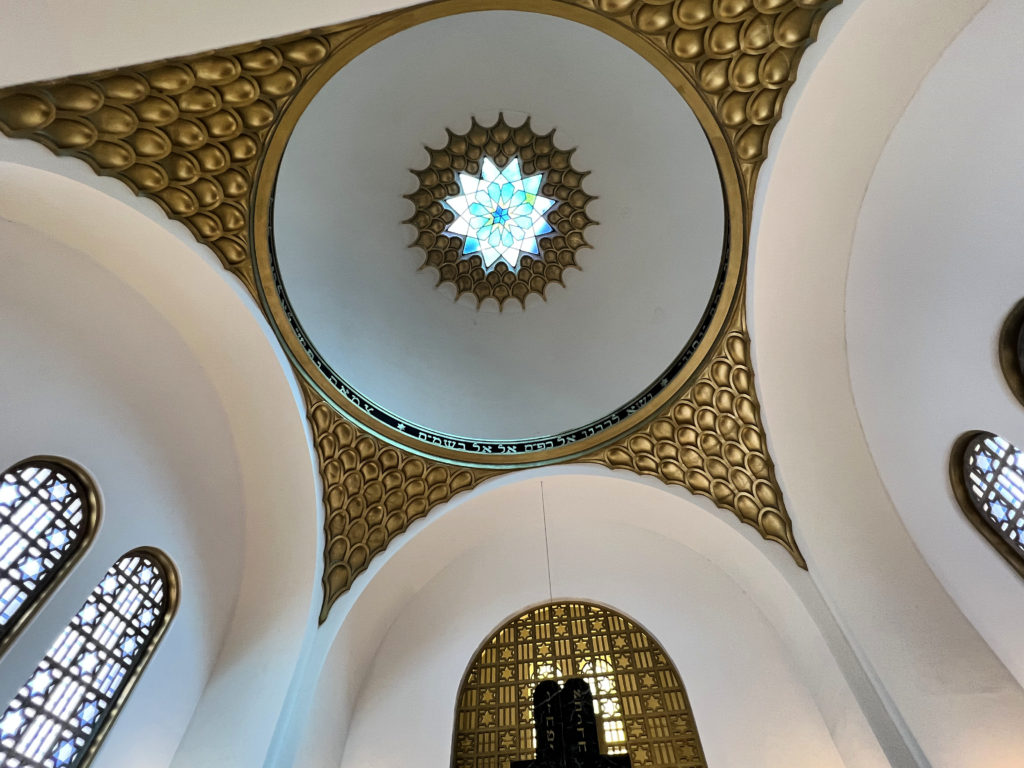
We also walked through the Raoul Wallenberg Emlékpark, also known as the Holocaust Memorial Park. It commemorates victims of the Arrow Cross (the Hungarian Nazi Party) and those who risked their lives trying to save the Jews. They are honored with the term, “Righteous Among the Nations.” I have included some information about Wallenberg, but there there are others who are also credited with saving thousands of lives.
Swedish diplomat Raoul Wallenberg led one of the most extensive and successful rescue efforts during the Nazi era. His work with the War Refugee Board saved thousands of Hungarian Jews. Shortly after arriving in Budapest, Hungary, in July 1944, Wallenberg began distributing certificates of protection to Jews. During the autumn of 1944, Wallenberg repeatedly intervened to secure the release of bearers of certificates of protection and those with forged papers.
https://encyclopedia.ushmm.org/content/en/article/raoul-wallenberg-and-the-rescue-of-jews-in-budapest
Despite the efforts of people like Raoul Wallenberg, thousands of Jewish people died at the hands of the Nazis. In the middle of the park is a metal weeping willow tree which was erected in 1991. The sculpture is known by many names including the Tree of Life, Holocaust Memorial Tree, and the Memorial of the Hungarian Jewish Martyrs. It memorializes the almost 400,000 Hungarian Jews who died at the hands of the Nazis. Individual leaves are inscribed with the names of many of those who were killed. The willow tree is a symbol of mourning in the Hungarian Jewish tradition.

